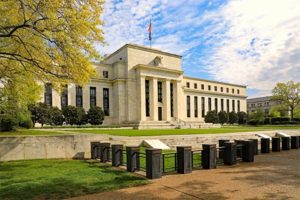Borrowers Face Confusion over New Student Loan Servicers
The Department of Education is nearing completion of its transfer of millions of federal student loans to a new set of loan servicers, but the process did not come without a few glitches.
Officials announced last week that the transfer of all student loans under the William D. Ford Federal Direct Loan (Direct Loan) Program, previously serviced by the Direct Loan Servicing Center (known as ACS), will finish on Aug. 29.
New servicers include Sallie Mae, Nelnet, FedLoan Servicing (PHEAA), Great Lakes Educational Loan Services, MOHELA and Aspire Resources, among others.
The transition, which started in January, is part of a provision tucked into the 2010 Obamacare health care reform that shifted student loan service contracts from for-profit businesses to nonprofit organizations. These companies don’t loan students money, but they do collect payments from borrowers to send to lenders.
“A newly transferred borrower must start making payments to and communicating solely with his or her new federal loan servicer,” reads a DOE news release. “Each borrower will receive a welcome letter from the borrower’s new servicer that informs the borrower of the loan transfer and the new servicer’s contact information.”
The move was not seamless. The switch from a complicated system known for delays and lack of guidance from the DOE is causing problems for some borrowers. Issues include randomly readjusted payments, inaccurate changes in loan statuses and little to no warning of the upcoming changes.
Transition Causes Problems for Some Borrowers
While there is no official count of problems caused by the transition, an April 23 report from ProPublica shows some student loan borrowers experienced reductions in their monthly student loan payments during the DOE loan servicer switch.
One borrower said her usual $200 monthly payment to MOHELA dropped to $50. While the reduction appears like a welcome surprise, it means she’ll pay more interest over a longer period of time. A MOHELA representative told ProPublica that the company is trying to minimize disruption and resolve transition issues.
Another borrower said her $100,000 student-loan balance dropped to zero when she checked DOE’s student loan website, according to the report. One loan servicer representative said her loan was in forbearance, and another said there was no record of the forbearance. She later learned EdFinancial now handles her loan.
The borrower ignored the forbearance confusion and continued making payments to avoid problems down the road. EdFinancial did not respond to ProPublica’s request for comment.
More problems could arise from the transition, especially for borrowers making online payments.
DOE alerted borrowers on July 26 that online access and payment, automatic debit and other services that were originally provided by servicers COSTEP, EDGEucation Loans, EdManage and KSA Servicing will be discontinued by September. Borrowers must contact new partners MOHELA and Aspire Resources Inc. to reactivate their online services.
CFPB Increases Oversight of Student Loan Servicers
The confusion caused by the transition from for-profit servicers to nonprofit organizations could raise some red flags at the Consumer Financial Protection Bureau.
The CFPB in March announced it would oversee all student loan servicers, including for-profit and nonprofit organizations. While DOE officials maintain their own oversight regulations for loan servicers, CFPB officials say it’s not enough.
“Many servicers perform their functions well,” a CFPB report shows. “But the Bureau’s recent report on private student loan complaints highlighted some concerns that some borrowers have reported.”
Those concerns include:
- Confusion about the terms and conditions of their loans
- Servicing personnel unaware of other resources available to borrowers
- Lost and erroneous paperwork
Those same problems were reported among borrowers of federal student loans.
“When problems arise because of servicing concerns, student loan borrowers may end up in trouble. They may miss a payment, owe more money because of additional interest on principal, or face future difficulties with credit because of a poor payment history,” the agency’s report stated. “The [CFPB] would be reviewing servicers’ activities to evaluate the risks they may pose to consumers and assess their compliance with federal consumer financial law.”
The scope of possible issues from the student loan servicer transition should be more evident when the switch finishes later this month.
Sources:
- CFPB, (2013, March 14). CFPB Proposes Rule to Oversee Nonbank Student Loan Servicers. Retrieved from http://www.consumerfinance.gov/pressreleases/consumer-financial-protection-bureau-proposes-rule-to-oversee-nonbank-student-loan-servicers/
- Wang, Marian. (2013, April 23). Student Loan Borrowers Dazed and Confused by Servicer Shuffle. Retrieved from http://www.propublica.org/article/student-loan-borrowers-dazed-and-confused-by-servicer-shuffle
- Department of Education (2013, August 16). Loan Servicing Information - Direct Loan Servicing Center (ACS) Transfer Update and Closure Plan. Retrieved from http://ifap.ed.gov/eannouncements/081613LSIDirectLoanServicingCenterACSTransferUpdateClosurePlan.html


















